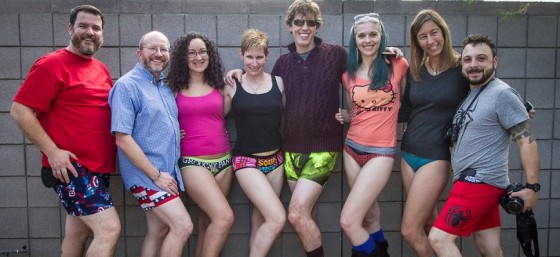
Recently, I received an email from a photographer (not my client) who had a question about the validity of model releases. As I understood the situation, he hired a model (over age 18) to do a photoshoot at his studio. The model was photographed nude for at least part of the shoot. The model signed a model release and was paid for her modeling services.
After the photoshoot, the photographer censored some of the images to comply with Facebook’s rules and posted them online. The model saw the images and was upset. The photographer asked me if the model had any authority to force him to take the images down.
The Rules of Model Releases
Model releases are standard in the photography world. In most cases, the photographer owns the copyright in their work from the moment the photo is created, not the person in the photo, and the model owns the right to publicize their own image.
The model release transfers the model’s right to publicity in those images to the photographer, which allows the photographer to use the images per the terms of the release. Usually, when I write a model release or a model release template, the model gives the photographer permission to use the images in any way and for any purpose, without restriction.
In general, once the model release is signed, the model’s given up their rights. If the model later regrets signing it, there may be nothing they can do to “unring that bell” unless the photographer is willing to negotiate another agreement – such as a copyright assignment where the model purchases the copyright rights in the images from the photographer.
Think Before You Sign
If you are a model, read the model release carefully. Never sign the release without reading and understanding it. Many of them allow for unfettered use by the photographer, including the right to license the images to others. Treat the images as if they are going to end up all over the internet, on billboards, on products or marketing campaigns you hate. Chances are, that’s not going to happen, but it could.
I write not just as a lawyer, but also a model myself. On a number of occasions, I have written and signed my own model release. Models may give up substantial rights when signing these documents, so it’s not a decision to make lightly.
What Could Invalidate a Model Release
Even if the model release was written by a lawyer and appears to valid on its face, there are situations where a model release might be invalid due to the circumstances surrounding the shoot:
- The model was minor (Depending on your state, minors may not be able to sign contracts or they can withdraw their consent upon reaching the age of majority.)
- The model was an adult but lacked the capacity to enter into a legally binding contract. (These people usually have an appointed guardian to sign for them.)
- The model was intoxicated. (In general, intoxicated people can’t enter into valid contracts.)
- The model was forced to sign the contract under duress. (You can’t get a valid contract if you use threats or force to get someone to sign it.)
There can also be instances where the photo in question was taken outside the scope of the model release and so the model release does not apply.
I get questions every day about photography, image rights, and copyright. If you are a photographer or model (or aspiring to be one), it’s imperative that you understand these issues. Many disputes can be avoided with well-written contracts and accurate information. I’m constantly doing work in this area, so if you want to keep up with what I’m doing or if you need help, you can contact me directly or check out the other posts and videos I’ve done on the legal side of photography. You can also get access to more exclusive content that is available only to people on my mailing list, by subscribing here.
Lights Camera Lawsuit
There’s always a need for quality legal information for photographers. That’s why I created an online course called Lights Camera Lawsuit: The Legal Side of Professional Photography to address photographers’ most important questions. I want you to feel secure in your business, confident in the way you operate day-to-day, knowing that you’ve set yourself up to get paid what your worth without incident.
At $497, the course contains nearly six hours of legal information you can immediately apply to your business. That’s less than what I charge for two hours of legal work for clients!
Please subscribe for more information and to make sure you don’t miss out on any special offers or discounts.







